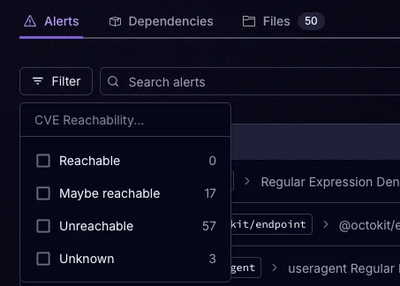
Product
Introducing Rust Support in Socket
Socket now supports Rust and Cargo, offering package search for all users and experimental SBOM generation for enterprise projects.
Multimodal AI Story Teller, built with Stable Diffusion, GPT, and neural text-to-speech
A multimodal AI storyteller, built with Stable Diffusion, GPT, and neural text-to-speech (TTS).
Given a prompt as an opening line of a story, GPT writes the rest of the plot; Stable Diffusion draws an image for each sentence; a TTS model narrates each line, resulting in a fully animated video of a short story, replete with audio and visuals.

Story Teller is available on PyPI.
$ pip install storyteller-core
$ git clone https://github.com/jaketae/storyteller.git
$ cd storyteller
$ pip install .
[!NOTE] For Apple Silicon users,
mecab-python3is not available. You need to installmecabbefore runningpip install. You can do this with Hombrew viabrew install mecab. For more information, refer to https://github.com/SamuraiT/mecab-python3/issues/84.
dev dependencies and install pre-commit hooks. This will automatically trigger linting and code quality checks before each commit.$ pip install -e .[dev]
$ pre-commit install
The quickest way to run a demo is by using the command line interface (CLI). To get started, simply type:
$ storyteller
This command will initialize the story with the default prompt of Once upon a time, unicorns roamed the Earth. An
example of the output that will be generated can be seen in the animation above.
You can customize the beginning of your story by using the --writer_prompt argument. For example, if you would like to
start your story with the text The ravenous cat, driven by an insatiable craving for tuna, devised a daring plan to break into the local fish market's coveted tuna reserve.,
your CLI command would look as follows:
storyteller --writer_prompt "The ravenous cat, driven by an insatiable craving for tuna, devised a daring plan to break into the local fish market's coveted tuna reserve."
The final video will be saved in the /out/out.mp4 directory, along with other intermediate files such as images,
audio files, and subtitles.
To adjust the default settings with custom parameters, you can use the different CLI flags as needed. To see a list of all available options, type:
$ storyteller --help
This will provide you with a list of the options, their descriptions and their defaults.
options:
-h, --help show this help message and exit
--writer_prompt WRITER_PROMPT
The prompt to be used for the writer model. This is the text with which your story will begin. Default:
'Once upon a time, unicorns roamed the Earth.'
--painter_prompt_prefix PAINTER_PROMPT_PREFIX
The prefix to be used for the painter model's prompt. Default: 'Beautiful painting'
--num_images NUM_IMAGES
The number of images to be generated. Those images will be composed in sequence into a video. Default:
10
--output_dir OUTPUT_DIR
The directory to save the generated files to. Default: 'out'
--seed SEED The seed value to be used for randomization. Default: 42
--max_new_tokens MAX_NEW_TOKENS
Maximum number of new tokens to generate in the writer model. Default: 50
--writer WRITER Text generation model to use. Default: 'gpt2'
--painter PAINTER Image generation model to use. Default: 'stabilityai/stable-diffusion-2'
--speaker SPEAKER Text-to-speech (TTS) generation model. Default: 'tts_models/en/ljspeech/glow-tts'
--writer_device WRITER_DEVICE
Text generation device to use. Default: 'cpu'
--painter_device PAINTER_DEVICE
Image generation device to use. Default: 'cpu'
--writer_dtype WRITER_DTYPE
Text generation dtype to use. Default: 'float32'
--painter_dtype PAINTER_DTYPE
Image generation dtype to use. Default: 'float32'
--enable_attention_slicing ENABLE_ATTENTION_SLICING
Whether to enable attention slicing for diffusion. Default: 'False'
If you have a CUDA-enabled machine, run
$ storyteller --writer_device cuda --painter_device cuda
to utilize GPU.
You can also place each model on separate devices if loading all models on a single device exceeds available VRAM.
$ storyteller --writer_device cuda:0 --painter_device cuda:1
$ For faster generation, consider using half-precision.
$ storyteller --writer_device cuda --painter_device cuda --writer_dtype float16 --painter_dtype float16
[!NOTE] PyTorch support for Apple Silicon (MPS) is work in progress. At the time of writing,
torch.cumsumdoes not work withtorch.int64(issue) on PyTorch stable 2.0.1; it works on nightly only.
If you are on an Apple Silicon machine, run
$ storyteller --writer_device mps --painter_device mps
if you want to use MPS acceleration for both models.
For faster generation, consider enabling attention-slicing to save on memory.
$ storyteller --enable_attention_slicing true
For more advanced use cases, you can also directly interface with Story Teller in Python code.
from storyteller import StoryTeller
story_teller = StoryTeller.from_default()
story_teller.generate(...)
from storyteller import StoryTeller, StoryTellerConfig
config = StoryTellerConfig(
writer="gpt2-large",
painter="CompVis/stable-diffusion-v1-4",
max_new_tokens=100,
)
story_teller = StoryTeller(config)
story_teller.generate(...)
Released under the MIT License.
FAQs
Multimodal AI Story Teller, built with Stable Diffusion, GPT, and neural text-to-speech
We found that storyteller-core demonstrated a healthy version release cadence and project activity because the last version was released less than a year ago. It has 1 open source maintainer collaborating on the project.
Did you know?

Socket for GitHub automatically highlights issues in each pull request and monitors the health of all your open source dependencies. Discover the contents of your packages and block harmful activity before you install or update your dependencies.

Product
Socket now supports Rust and Cargo, offering package search for all users and experimental SBOM generation for enterprise projects.

Product
Socket’s precomputed reachability slashes false positives by flagging up to 80% of vulnerabilities as irrelevant, with no setup and instant results.

Product
Socket is launching experimental protection for Chrome extensions, scanning for malware and risky permissions to prevent silent supply chain attacks.